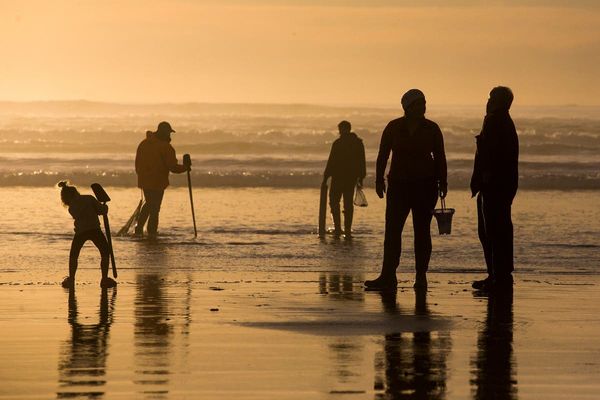A decade ago, hundreds of short-tailed shearwaters were found struggling for life along the eastern coastline.
It was a phenomenon that rocked locals and startled even experienced vets. And it wasn't a one-off occurrence.
Dozens of shearwaters - commonly known as muttonbirds - have been seen this week at Bennetts Beach near Tea Gardens, and Swansea Heads.
And in May, the lifeless bodies of the birds were spotted on Hunter beaches.
So, what's leading to the mass death of one of Australia's most populous seabirds?


Each year, the birds fly an extraordinary 15,000 kilometres from the North Pacific - often as far as Alaska - with the hope of arriving safely back in Victoria.
A path to Antartica is followed several months later by non-breeding and immature shearwaters.
But many birds never make it. Instead, they plummet down on the beaches of the Hunter, Central Coast and Great Lakes.
A Queensland University of Technology research team led by CSIRO scientist Lauren Roman found the birds had become so starved during flights that their natural instinct to recognise the krill and small fish failed.
The birds had been eating pumice rocks and plastics in their desperation for food.
Dr Roman's team concluded that a volcanic eruption in the Kermadec arc north of New Zealand in 2012 had caused a "raft" of pumice to drift along the shearwaters' migration path and appear like food.
"We don't know what the shearwaters faced as they migrated to Australia. But our results would suggest they couldn't access enough prey to complete their journey," Dr Roman told the CSIRO in 2021.
And climate change is playing it's part in this sad tail.
A similar seabird mass-death occurred at the other end of the migration path in 2015, when thousands common murres birds died near California.
Infamously, the answer to this lay in a disruption of food webs created by 'the blob' - a huge mass of warm, nutrient-poor water off the Pacific coast.
The blob was about six degrees above typical temperatures for the area. Production of microscopic algae eaten by the birds dropped, and harmful algae grew at enormous rates. Other species like sea lions died, too.
So what is the outlook for our muttonbirds?
Thankfully, the migrations of shearwaters is in the natural life cycle for the birds, and population rates have not declined.
While still occurring, the pumice-eating incident of 2013 was the most damaging on record and he death toll in years since has been far less.
The Tea Gardens veterinarian clinic said it was best to leave the birds as they are and to report any animals in distress to the WIRES wildlife rescue service.
If they're allowed to rest and recuperate, oftentimes the birds that have not died are able to eventually take flight again.
Some muttonbirds have been banded by researchers to better understand their movements. If you find one, you should report it to your local NPWS office.
- WIRES: 1300 094 737







